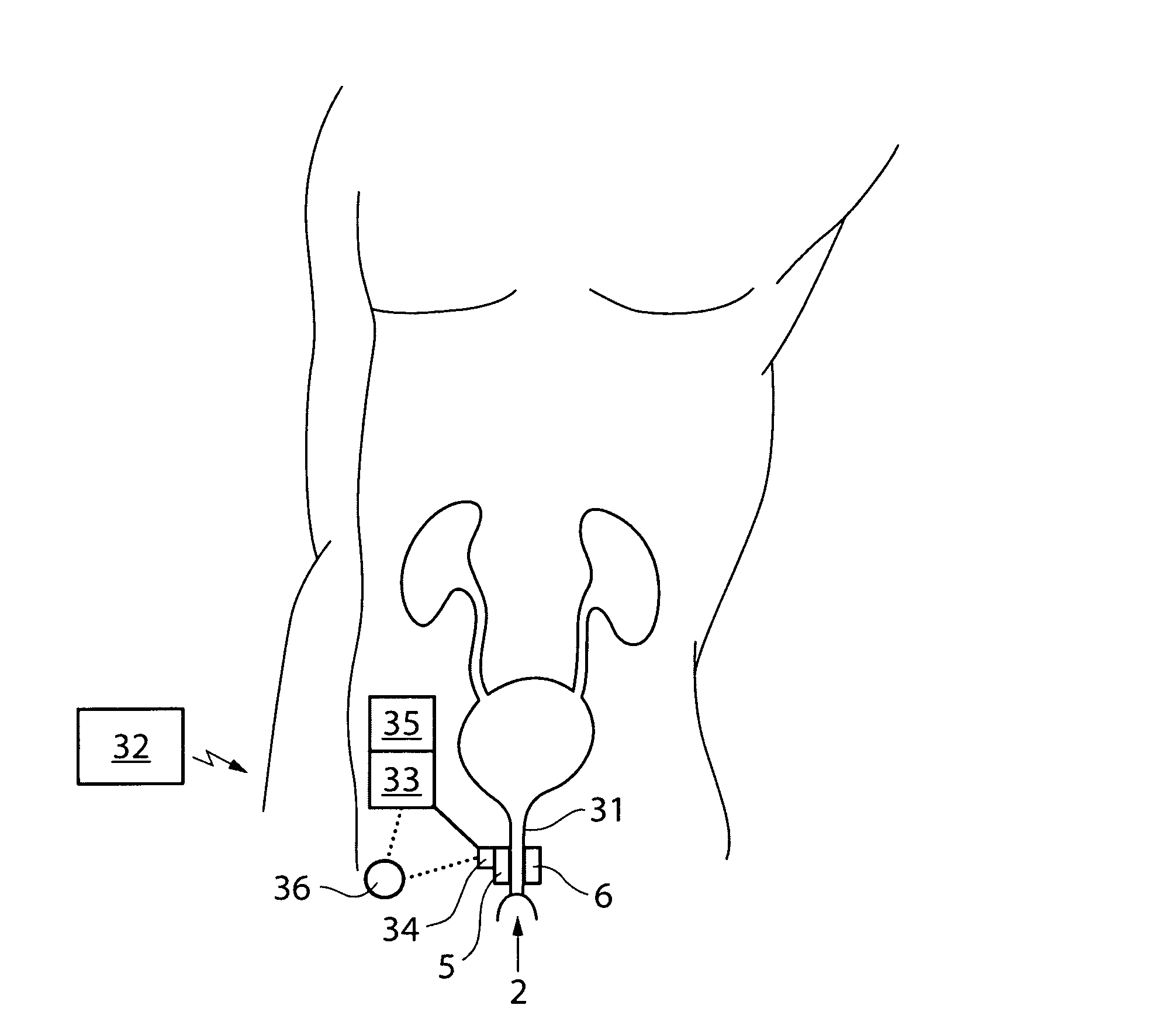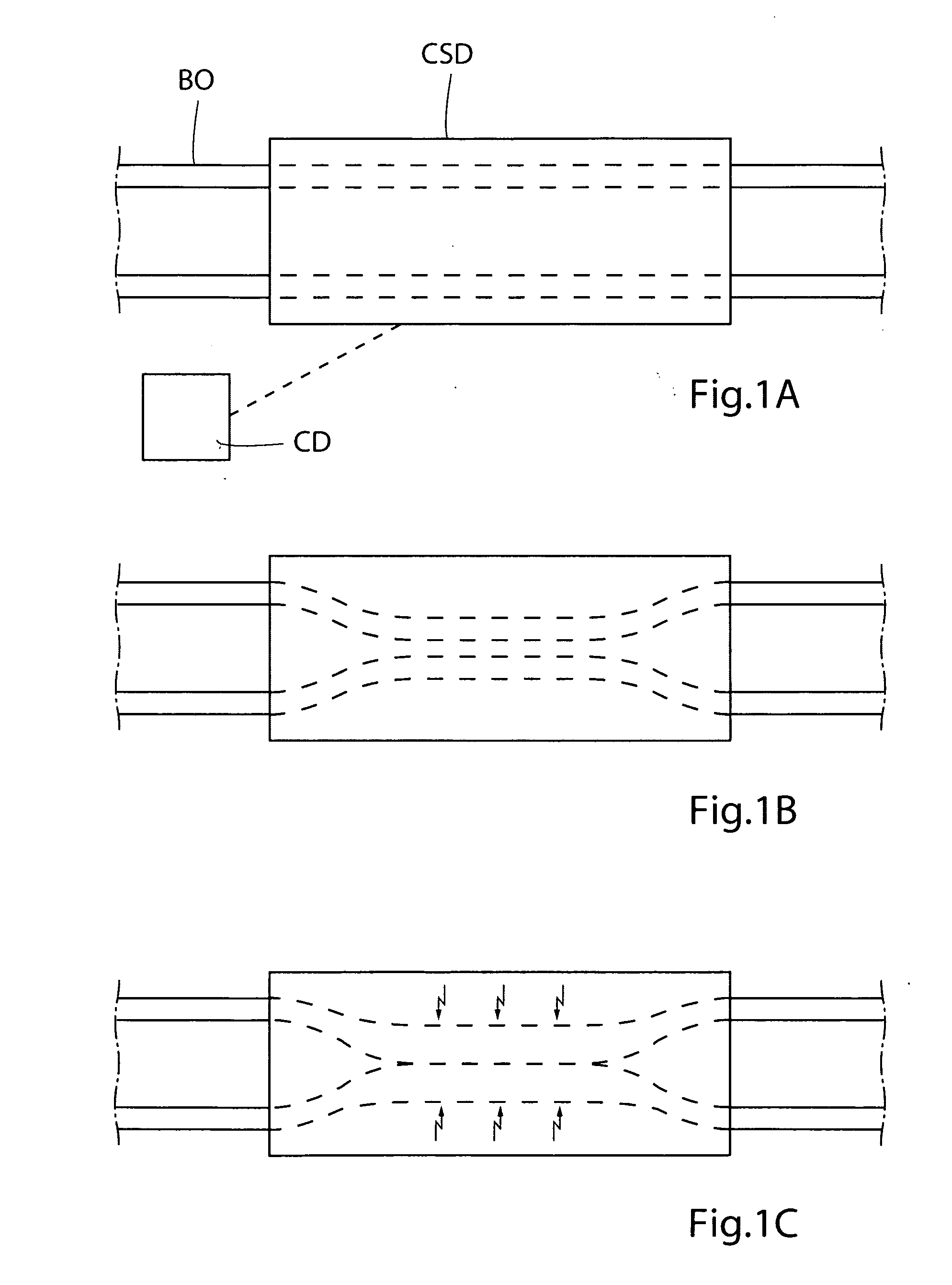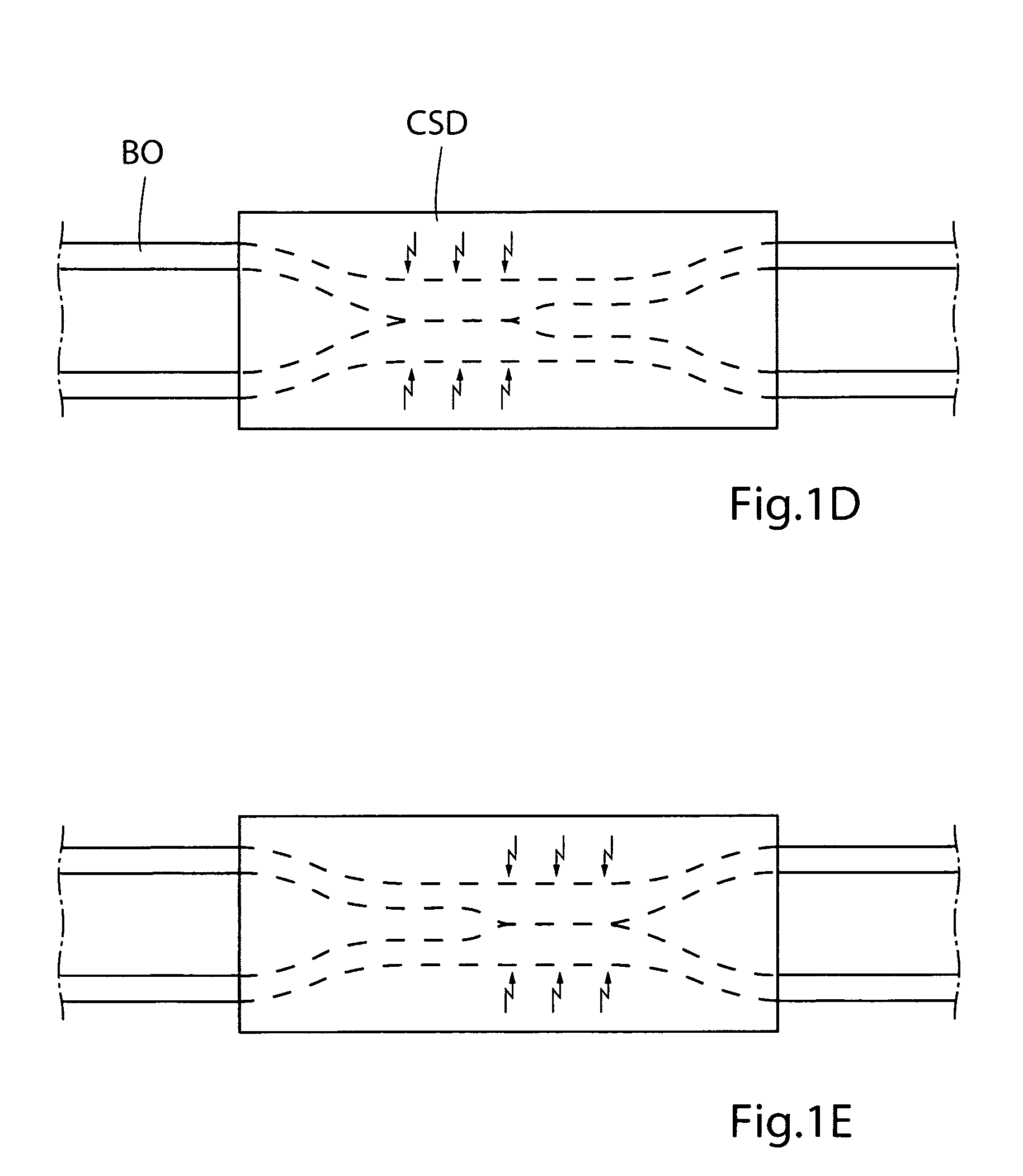Method for controlling flow of urine in a patient's urethra, ureter, renal pelvis or bladder
a technology for urethra, ureter, renal pelvis or urine bladder, applied in the direction of prosthesis, artificial respiration, therapy, etc., can solve the problems of severe urine leakage, inability to pump, and inability to control the flow of urin
- Summary
- Abstract
- Description
- Claims
- Application Information
AI Technical Summary
Benefits of technology
Problems solved by technology
Method used
Image
Examples
Embodiment Construction
See Below
[0060]In accordance with an alternative, step (a) is performed by constricting any wall portions of a series of wall portions of the tissue wall of the urethra, ureter, renal pelvis or bladder, respectively. In accordance with an alternative, the wall portions of the series of wall portions are constricted in random or in accordance with a predetermined sequence. In accordance with an alternative, the wall portions of the series of wall portions are successively constricted along the urethra, ureter, renal pelvis or bladder to move the urine in the urinary passageway of the patient's urethra, ureter, renal pelvis or bladder or to prevent the urine to move in the lumen of the patient's urethra, ureter, renal pelvis or bladder.
[0061]In accordance with an alternative, step (b) is performed by stimulating any constricted wall portions of the series of wall portions. In accordance with an alternative, the wall portions of the series of wall portions are constricted in random or ...
PUM
 Login to View More
Login to View More Abstract
Description
Claims
Application Information
 Login to View More
Login to View More - R&D
- Intellectual Property
- Life Sciences
- Materials
- Tech Scout
- Unparalleled Data Quality
- Higher Quality Content
- 60% Fewer Hallucinations
Browse by: Latest US Patents, China's latest patents, Technical Efficacy Thesaurus, Application Domain, Technology Topic, Popular Technical Reports.
© 2025 PatSnap. All rights reserved.Legal|Privacy policy|Modern Slavery Act Transparency Statement|Sitemap|About US| Contact US: help@patsnap.com



